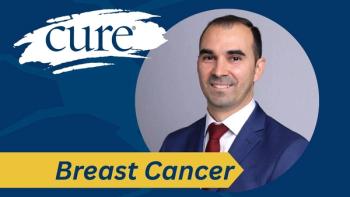
What Does Gastrointestinal Cancer Mean?
Key Takeaways
- GI cancers affect the digestive system, with common types including colon, rectum, stomach, esophagus, and pancreas cancers.
- Diagnosis involves endoscopy, imaging, and blood tests to determine cancer type, stage, and spread.
Here is a primer on what patients who have received a diagnosis of gastrointestinal cancer need to know.
What is Gastrointestinal Cancer?
Gastrointestinal (GI) cancers affect the organs of the digestive system. The most common types include cancers of the colon, rectum, stomach, esophagus and pancreas. The development of GI cancers can be influenced by a combination of factors including genetics, lifestyle and environmental exposures. Understanding the type and stage of your specific cancer is the first step in creating a personalized treatment plan.
How Is Gastrointestinal Cancer Diagnosed?
The diagnostic process for GI cancer often involves a variety of tests designed to confirm the presence of cancer determine its type and stage and assess its spread. These tests provide your oncology team with the information needed to tailor a treatment plan to your unique situation.
What Tests Are Used to Detect Gastrointestinal Cancer?
- Endoscopy and Colonoscopy: A doctor uses a thin, flexible tube with a camera to examine the inside of your GI tract. During the procedure a biopsy or small tissue sample can be taken for laboratory analysis. This is a crucial step for confirming a cancer diagnosis.
- Imaging Tests: Techniques such as CT scans, PET scans and MRI scans are used to create detailed images of the organs and tissues. These images help doctors determine the size of the tumor and whether the cancer has spread to other parts of the body a process called metastasis.
- Blood Tests: Specific blood tests can detect tumor markers which are substances produced by cancer cells or by the body in response to cancer. While not definitive for diagnosis they can provide additional information for your healthcare team.
What Are the Treatment Options for Gastrointestinal Cancer?
Your treatment plan will depend on several factors including the type of cancer, its stage, your overall health and personal preferences. An oncologist will work with you to explain the available options and recommend a course of action.
- Surgery: This is often the primary treatment for early-stage GI cancers. The goal is to surgically remove the tumor and surrounding tissue. For some cancers, such as colon cancer, surgery alone may be curative.
- Chemotherapy: Chemotherapy uses powerful drugs to kill cancer cells. It can be administered before surgery (neoadjuvant therapy) to shrink a tumor or after surgery (adjuvant therapy) to kill any remaining cancer cells. It is also used as a primary treatment for advanced or metastatic disease.
- Radiation Therapy: This treatment uses high energy radiation to kill cancer cells and shrink tumors. It is often used in combination with chemotherapy or surgery particularly for rectal and esophageal cancers.
- Targeted Therapy: These drugs specifically target certain genes, proteins or other molecules that contribute to the growth and spread of cancer cells. They are designed to be more precise and have fewer side effects than traditional chemotherapy.
- Immunotherapy: This treatment harnesses the body's own immune system to recognize and attack cancer cells. It has shown significant promise in treating various GI cancers, particularly those with specific genetic markers.
Treatments continue to evolve with time. For example, radiation therapy now offers more precise treatment with fewer side effects, as Dr. Rachit Kumar, an assistant professor of radiation oncology and molecular radiation sciences at The John Hopkins University School of Medicine in Washington, D.C.,
“Radiation is a scary word, and I think that when you're dealing with a new cancer diagnosis, which is already frightening, to come into our office and think about the past, where patients experienced severe radiation burns, severe radiation toxicity, and debilitating side effects, that's what many people come in expecting, frankly,” said Kumar. “What is very helpful for us is to be able to tell patients that although this process isn't without its challenges, it's not a walk in the park, we know that our technology has evolved significantly.
“It has gone from basically pointing a beam of radiation at a patient and accepting that there would be collateral damage throughout that area. Now, we can say much more comfortably that we have the ability to shape radiation, to avoid normal tissues, to actually measure in detail how much radiation normal tissues are receiving, and to use the most advanced technology to direct radiation away from those normal tissues and really concentrate it on the target tissue.”
What Side Effects Can Occur With Gastrointestinal Cancer Treatment?
The side effects of cancer treatment vary widely depending on the type of treatment and an individual's response. Managing these side effects is a key part of your care.
- Nausea and Vomiting: Common with chemotherapy and some radiation treatments. Anti-nausea medications can be very effective in managing these symptoms.
- Fatigue: A pervasive and often challenging side effect of all cancer treatments. It's important to listen to your body and get adequate rest.
- Hair Loss: A well-known side effect of many chemotherapy drugs. This is temporary and hair typically grows back after treatment is completed.
- Peripheral Neuropathy: A condition where damage to the nerves can cause pain, numbness or tingling, especially in the hands and feet. This is a potential side effect of some chemotherapy drugs.
- Gastrointestinal Issues: Diarrhea constipation or mouth sores are common side effects of chemotherapy and radiation to the abdomen.
Key Takeaways for Patients With Gastrointestinal Cancer
A cancer diagnosis can be overwhelming, but it's important to remember that you are not alone on this journey. Your healthcare team is your partner in this process. Use this information as a starting point for conversations with your oncologist. Ask questions advocate for yourself and ensure you have a clear understanding of your diagnosis and treatment plan. Open communication and a strong support system are your most valuable tools.
Editor’s note: This guide is designed to be a starting point. Your personal experience will be unique. By using this information as a foundation for your discussions, you can partner with your oncologist to make the best decisions for your health.
This article is for informational purposes only and is not a substitute for professional medical advice. Please contact your healthcare team with any questions or concerns.
For more news on cancer updates, research and education,





